
Download the PDF of this article
When pregnant practitioner Lucy Kenworthy brought in her baby scan picture and video to share with the children at Stepping Stones Nursery in Gomersal, West Yorkshire, they were fascinated and wanted to learn more about their bodies.
‘It had recently been Science Week and the children had enjoyed conducting lots of experiments, were keen to learn facts and were asking lots of questions,’ recalls nursery manager Bernie Muffitt.
‘The scan images got the children asking lots more questions, so we thought it would be good to build on their interest and investigate our bodies. We find that the children get more out of their learning if they initiate the idea. They also like when the adults are not sure of something so they can research together and find out more.’
Practitioners had observed high levels of engagement in the previous experiments so decided to set up some more. ‘We saw how the children loved predicting and talking about what was going to happen next, why chemicals or objects may have reacted in that way and what they could do next,’ says Miss Muffitt. ‘Children spoke about their experiments in circle time with enthusiasm and parents were coming into nursery and commenting that the children were sharing their knowledge with them at home.’
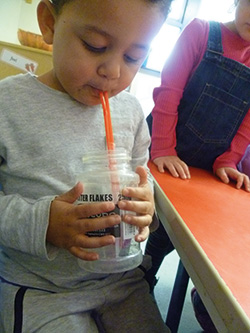 The team researched experiments to conduct with the children to enable them to understand better how our bodies work.
The team researched experiments to conduct with the children to enable them to understand better how our bodies work.
EXPERIMENTS
Hands
They started by making ‘robot hands’ to demonstrate how a real hand works, by drawing around their own hands on card, cutting them out, sticking segments of drinking straw on the fingers and threading string through them. Children discussed how they were using their fingers to make the hands.
Once finished, the children were able to pull the five strings and flex the robot fingers. ‘It was very effective and the children liked to see how they moved together and independently,’ says Miss Muffitt. ‘Just pulling one would move a single finger, or pulling them all tight would make the hand close into a fist.’
Intestines
Another experiment enabled the children to visualise the process of digestion by using food and pipes to look at how food travels from our stomach through the intestines. They spoke about how we eat food by chewing and then swallowing and then it passes through the body until waste food eventually goes into the toilet. ‘There was lots of fun and giggling and talk of poo,’ recalls Miss Muffitt.
Pushing food through the tubes led the children to discussing how it is important to chew food properly.
Lungs
Practitioners used balloons to represent lungs and discussed how lungs inflate and deflate as we breathe and air moves in and out of them.
They spoke about the role of the lungs in bringing air to our bodies and passing oxygen into the bloodstream. The children then put drinking straws into balloons and tried to use their own lungs to blow up the balloons, with some of the children having more success than others.
One child, following on from the intestine experiment, asked whether food can go into our lungs. ‘The children love it if an adult is not 100 per cent sure of an answer. We always ask them how we can find out and they suggest looking in a book or researching the answer on the tablet,’ says Miss Muffitt.
‘We feel it is good for the children to learn how to find out answers for themselves and also to see that they don’t have to know everything or to be right all the time. We find this supports those children who get embarrassed if they do not know an answer or are scared to try and give an answer for fear of being wrong.’
Senses
A child asked about the tongue and what it is for, so they discussed how it has a variety of important roles – helping to chew and swallow food and enabling us to talk. The children were interested to learn that the tongue has taste buds, which led them to investigate senses, starting with taste.
Practitioners gathered a range of flavours to cover the four common tastes – sweet, sour, bitter and salty – and the children tried each of them. They tried to decide what category each food was in. ‘The children found lemon was the funniest,’ says Miss Muffitt. ‘They didn’t like the sour taste, some described it as “spicy”, but they kept going back for more because they were laughing so much at the different faces they pulled when they tasted it.’
For touch, a variety of items with different shapes and textures were put in a box and covered with a blanket. Children were encouraged to describe what they felt like, which helped to extend their vocabulary, and guess what the object was. ‘Children displayed a sense of pride if they got it correct and we noticed that those who didn’t get it right wanted to persevere and have another go,’ says Miss Muffitt.
They were introduced to a range of fragrances to sniff in order to focus on smell. This was blended with sight by blindfolding the children and trying to get them to then guess what they were smelling. ‘The children were fascinated to discover how all their senses are so important and work together to help them find out things,’ Miss Muffitt adds.
‘It is important for the children to be involved and find out things for themselves. It is good for them to see how things work and why, rather than just talk about it or look at pictures. The children displayed a lot of independence while conducting the experiments and showed they were good at following instructions and problem-solving.’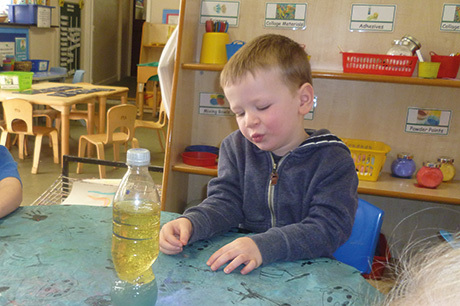
IN COMPARISON
Finding out how their bodies work, and particularly investigating senses, led the children to discuss how not everyone is the same and how some people have physical disabilities. They talked about why we use hearing aids and glasses and what it means to be blind or deaf.
‘The children started to compare themselves, such as they had brown or blonde hair,’ says Miss Muffitt. ‘I overheard one child comment that someone had long hair because they are a girl so we talked about how it’s not just girls who have long hair. It’s amazing how much learning and discussion we got.’
Two months on and the children are continuing to ask lots of questions and enjoy investigations. Miss Kenworthy is now on maternity leave and they are all excited to hear that the baby has been born and are looking forward to meeting him.
BOOK CORNER
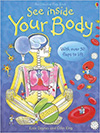 See Inside Your Body
See Inside Your Body
by Katie Daynes and Colin King
Bright, colour illustrations and diagrams display all the major organs of the human body and are accompanied by witty, clear and informative text. There are more than 50 flaps which children can lift to reveal extra detail.
 Why Do I Sneeze?
Why Do I Sneeze?
by Madeline Tyler
Fun illustrations and entertaining text help to explain why we sneeze and the mechanisms required, plus weird and wonderful sneezing facts.
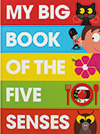 My Big Book of the Five Senses
My Big Book of the Five Senses
by Patrick George
Embark on a voyage of visual and sensory discovery: What feels nice to touch? Can you hear a bee buzzing or your heart beating? Or enjoy the smell of freshly cut grass or flowers? Do you prefer the taste of something salty or sweet? What can you see in the clouds?
 Parts
Parts
by Tedd Arnold
There’s fuzz in his belly button, his toes are peeling and something just fell out of his nose. The last straw is a loose tooth, which convinces the narrator of the awful truth – his parts are coming unglued!
 The Listening Walk
The Listening Walk
by Paul Showers and Aliki
A girl and her father take a quiet walk and discover an extraordinary world of sounds in their everyday environment.
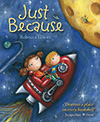 Just Because
Just Because
by Rebecca Elliott
‘My big sister Clemmie is my best friend. She can’t walk, talk, move around much, cook macaroni, pilot a plane, juggle or do algebra. I don’t know why she doesn’t do these things. Just because.’ However, having special needs doesn’t stop his sister from doing everyday things and sharing experiences with her brother.
 Inside Your Outside: All about the human body
Inside Your Outside: All about the human body
by Tish Rabe and Aristides Ruiz
The Cat in the Hat takes Sally and Dick for a ride through the human body, where they visit the right and left sides of the brain, scuba dive through the blood system, follow food and water through the digestive tract, and a whole lot more!









